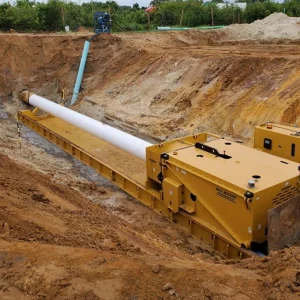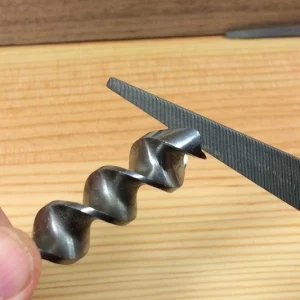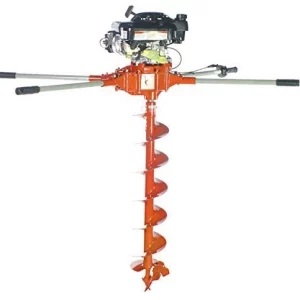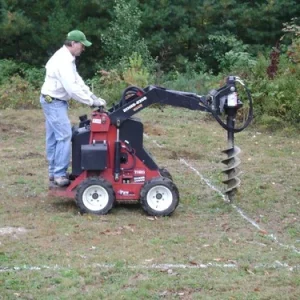Whether you’re erecting fences, planting trees, or installing signposts, drilling a hole is a laborious task. A PTO (Power Take-Off) Post Hole Digger is a game-changer, offering a faster and more efficient method for digging holes in various terrains. But, is the PTO Post Hole Digger really Useful?Well, hold onto your hats, folks, because you’re about to find out!
PTO Post Hole Digger Useful?
Certainly! The PTO Post Hole Digger has proven itself indispensable in numerous sectors. Its efficacy isn’t just about digging holes; it’s about doing it faster, safer, and more efficiently than traditional methods.
A PTO (Power Take-Off) post hole digger is a type of agricultural or construction equipment designed to dig holes in the ground for various purposes, such as installing fence posts, planting trees, or setting up signs. The PTO post hole digger is powered by a tractor’s PTO shaft, which transfers power from the tractor’s engine to the implement.What Is a PTO Post Hole Digger?
Benefits of Using PTO Post Hole Digger
Comparison with Traditional Methods
Traditional digging methods can’t hold a candle to the PTO Post Hole Digger. The difference in efficiency, precision, and safety is like comparing apples to oranges. Traditional methods often involve more manpower, more time, and sadly, more room for errors. Here is a detailed comparison.
| Aspect | PTO Post Hole Digger | Traditional Methods |
| Efficiency | Significantly higher efficiency due to tractor power. | Involves manual labor, slower progress. |
| Precision | Offers precise hole digging with consistent diameter. | Prone to inconsistencies and uneven holes. |
| Safety | Safer operation from the tractor’s seat. | Greater physical strain and potential for accidents. |
| Manpower | Requires minimal manpower, operated by one person. | Demands more workers for digging tasks. |
| Time | Rapid hole digging, reducing project completion time. | Lengthy process, increasing project duration. |
| Errors | Minimized room for errors, controlled by tractor operator. | Higher chances of errors, impacting quality. |
Industries That Benefit from PTO Post Hole Digger
Several industries have found a friend in the PTO Post Hole Digger:
- Agriculture: The PTO Post Hole Digger simplifies the task of planting crops, trees, and setting up fencing on agricultural land, enhancing overall productivity
- Landscaping: Landscapers can expedite projects by effortlessly creating holes for installing signs, light posts, and various landscape features.
- Construction: For construction projects, the PTO Post Hole Digger aids in digging holes for foundations, footings, and other essential structures.
- Fencing: Fencing companies find this tool invaluable for quickly and accurately creating holes for fence posts, optimizing installation processes.
- Polo Standing: Specific to equestrian sports, the PTO Post Hole Digger assists in creating holes for polo standing, streamlining maintenance.
- Plantation: The equipment is particularly useful in plantation activities, making hole digging for saplings and seedlings more efficient.
- Infrastructure Development: When building infrastructure like road signs or safety barriers, the PTO Post Hole Digger ensures precise hole placement.
- Farm Management: In farms, this tool aids in tasks such as erecting structures, installing equipment, and creating irrigation points.
Maintenance Tips for PTO Post Hole Digger
- Regular Inspection: Before each use, inspect the digger for wear, damage, and loose parts. Focus on the auger point, cutting edges, and shielding.
- Lubrication: Apply lubrication to moving parts, including pivot points, shafts, and gears. Regular lubrication prevents friction and ensures smooth operation.
- Cleaning: After use, clean the digger thoroughly to remove dirt, debris, and soil buildup. Clean auger flights and edges to maintain cutting efficiency.
- Storage: Store the digger in a dry, sheltered area to prevent rust and corrosion. Consider covering it to protect against the elements.
- Alignment: Ensure proper alignment of the digger components. Misalignment can lead to increased wear and decreased performance.
- Bolts and Fasteners: Regularly check and tighten bolts, nuts, and fasteners. Vibrations during operation can cause them to loosen.
- Auger Maintenance: Sharpen or replace auger blades as needed to maintain efficient digging. Dull blades require more power and stress the equipment.
- Hydraulic System: If applicable, maintain the hydraulic system according to the manufacturer’s recommendations.
Also, Read: How Deep Can a 2 Man Auger Dig?
FAQs on PTO Post Hole Digger Useful
Most can dig up to 6 feet deep, but this varies based on the model and attachment. Prices range based on brand and model, but you can expect to invest anywhere from $500 to over $2000. Yes, but ensure you have the appropriate auger for rocky conditions. While it’s user-friendly, proper training ensures safety and efficient operation. With responsible use, the environmental impact is minimal compared to traditional methods. Brands like John Deere and Land Pride are highly regarded in the industry.What’s the average depth a PTO Post Hole Digger can reach?
How much does a PTO Post Hole Digger typically cost?
Can I use the PTO Post Hole Digger on rocky terrain?
Is any special training required to operate it?
Are there any environmental concerns with using this machine?
Which brands are considered the best?
Conclusion
The PTO Post Hole Digger emerges as a game-changing tool for various industries, revolutionizing hole digging processes. Its efficiency, precision, and safety benefits make it a valuable addition to agriculture, construction, landscaping, and more. With its ability to streamline projects, reduce labor, and enhance overall quality, the PTO Post Hole Digger stands as a testament to modern innovation in the field.
By following proper maintenance practices and recognizing its numerous applications, industries can harness the power of this tool to achieve faster, safer, and more accurate hole digging results. As technology continues to shape industries, the PTO Post Hole Digger remains a prime example of how advancements can drive progress and efficiency in diverse sectors, transforming traditional practices and paving the way for a more productive future.






